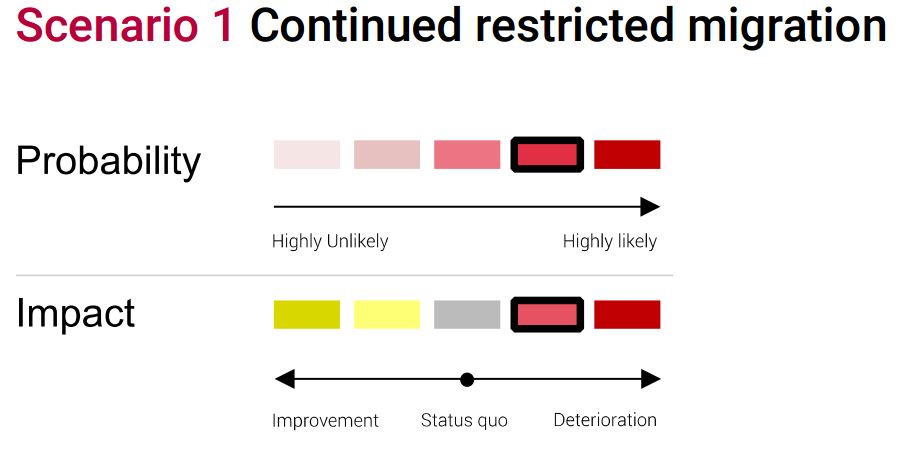What is on the horizon for migration between the Middle East and the EU over the next six months?
In January and February 2017, ACAPS conducted a scenario-building exercise to support the work of the Mixed Migration Platform (MMP). The exercise focused on migration between the Middle East and EU, exploring possible developments in migration via Greece and Turkey over the next six months. Following two workshops and meetings with government, UN, NGO, and Red Cross staff in Brussels, Ankara, and Antakya, five scenarios were identified in the report, accessible here.
- Continued restricted migration
- Number of asylum-seekers in Greece falls
- Number of asylum-seekers in Greece increases
- Increased returns to Syria
- Increased movement into Turkey
To build these scenarios, ACAPS used a ‘chain of plausibility’ methodology, outlined in more detail here. In the workshops, participants first agreed on the research question, reviewed relevant information on the current situation, and defined the geographical scope and time frame. Participants then brainstormed the relevant variables, mapped relationships between them, and identified assumptions about the directions these variables could take. The result was a set of ‘triggers’, which were grouped under each scenario.
For example, conflict in northern Syria is a variable that is related to displacement towards Turkey, which could increase, decrease or remain stable. Combined with a decision by Turkey to re-open its borders to Syrian refugees, an increase in conflict in northern Syrian could trigger, or drive, the scenario of increased movement into Turkey. The final step is to quantify the impact and likelihood of each scenario, and expand on the details, humanitarian consequences, and operational constraints expected in each scenario.

Example of Probability/Impact scale – Scenario 1 “Continued restricted migration”
While some scenarios are more or less likely than others, and each has a varying degree of impact on the humanitarian situation, all represent plausible situations that could emerge over the next six months if one or more of the triggers identified occurs. In the exercise, the scenario of continued restricted migration was deemed to be the most likely, while a significant increase or decrease in the number of asylum seekers in Greece was found to be the least likely scenario. However, if it were to occur, a large increase in the number of asylum seekers arriving in Greece would have the most negative impact on the humanitarian situation of the five scenarios identified.
Not all the scenarios are mutually exclusive, and more than one could emerge at the same time. For example, a spike in conflict in Syria could lead to increased movement into Turkey, but not necessarily into Greece. Meanwhile, the number of asylum-seekers in Greece could fall if EU member states fulfil their commitment to relocate 66,400 people throughout the EU, and Turkey continues to restrict population movement within and from its borders.
Scenario-building does not try to predict the future, but it does help humanitarian responders to think broadly about what lies on the horizon, and assess whether or not they are flexible enough to adapt their approaches, if necessary. Organisations might also take a certain scenario and its humanitarian consequences, and advocate for policies that lead towards, or away from, that scenario.
Over the coming months MMP will closely monitor the triggers and scenarios identified in the exercise, to better understand how the current migration situation is evolving, to identify new and emerging scenarios, to address information needs and gaps, and to advocate for improved migration policies.
Note: This article originally appeared on the Mixed Migration Platform website.